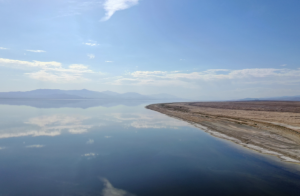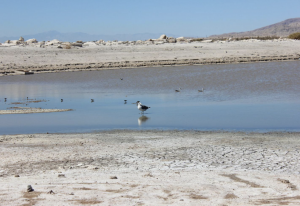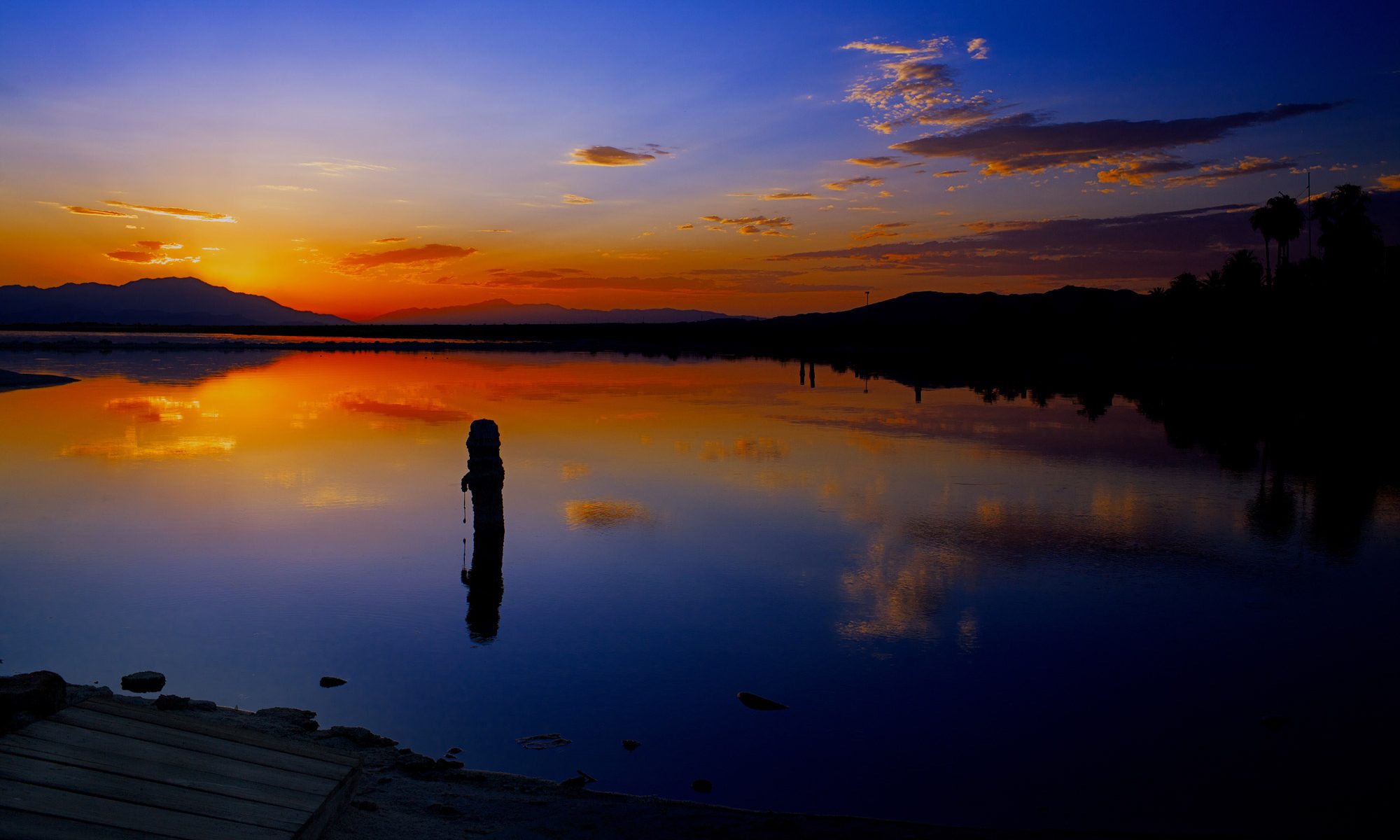
The Salton Sea is a place of stunning contradictions. For decades, Californians have tried to figure out what to make of it. Often described as a “man-made” or “accidental,” the Salton Sea formed between 1905 and 1907 when the Colorado River overflowed from an irrigation project into a deep bowl in the desert floor in present-day Imperial County.
Settlers described this flooding as an unprecedented disaster, but soon found a purpose for the sea as a receptacle for runoff from Imperial Valley farms. During the 50s and 60s, the sea became a popular tourist attraction, but rising water from increased irrigation flooded its hotels and resorts, driving the tourists away. Rumors about the health effects of swimming and angling in the pesticide-contaminated water also influenced the decline of the resorts.

In 2003, the Imperial Valley transferred its Colorado River water rights to San Diego, and the Salton Sea, which had been sustained by runoff from the valley for most of the twentieth century, lost much of its inflow. As the sea started to shrink, it released pesticides and other toxins leading to massive fish and bird die-offs over the course of two decades.
My recent book explores how, at different times viewed as a disaster, a sump, and a health resort, the Salton Sea came to be commonly viewed as a wasteland. Policymakers struggled to raise funds—and popular support—for the sea’s conservation. The area around it, subsequently, has been used for the kinds of industrial projects reserved for places held in low regard: mines, prisons, and military bases.
The Salton Sea wasn’t just an accident, despite its reputation as the result of engineering mistakes made by early settlers. In fact, it is the most recent example of a natural cycle of Colorado River overflows that have filled this part of the desert for thousands of years. Floods from the Colorado River have been big and small—vast inundations that resulted in water bodies like Lake Cahuilla and relatively small overflow pools that evaporated within months.
